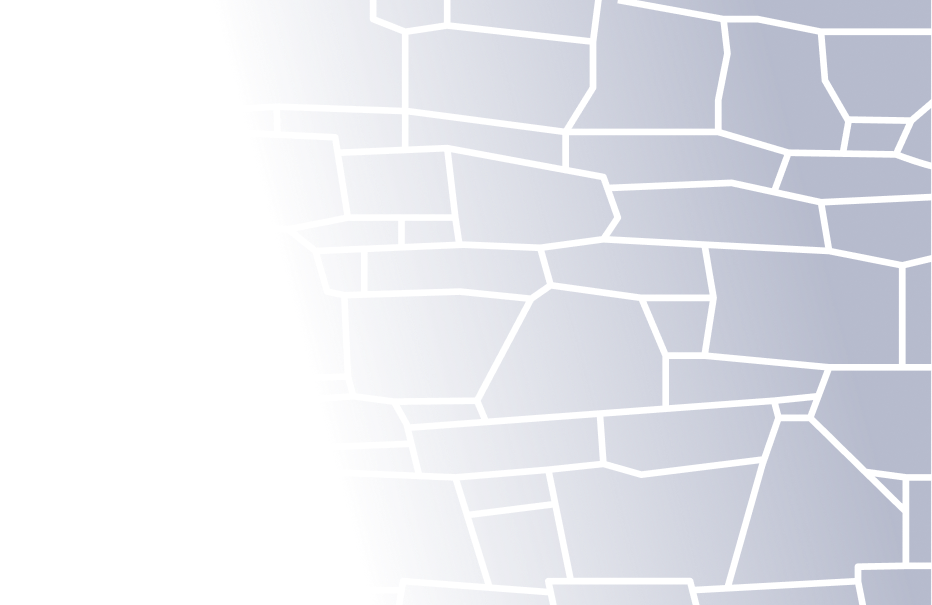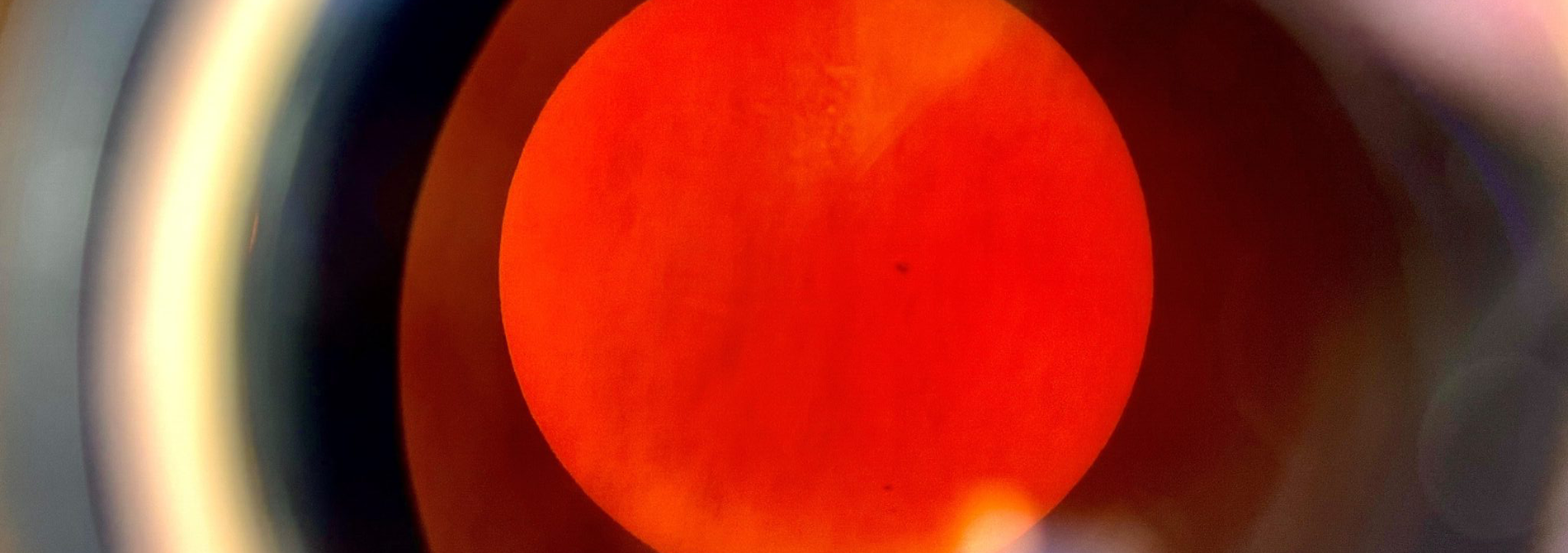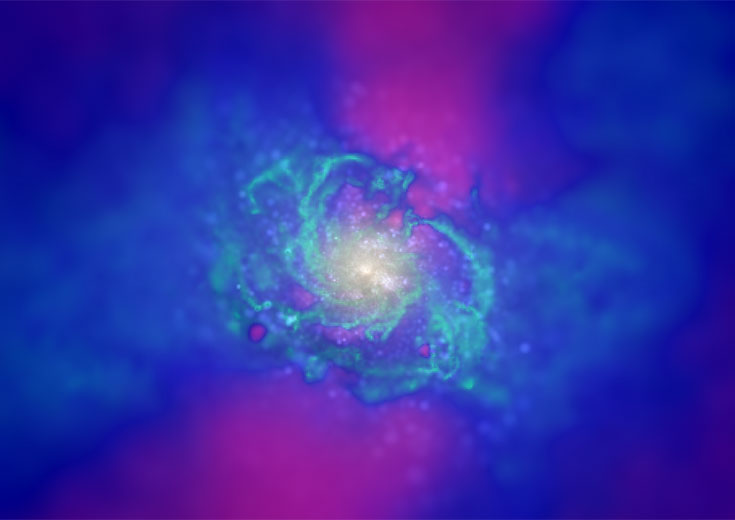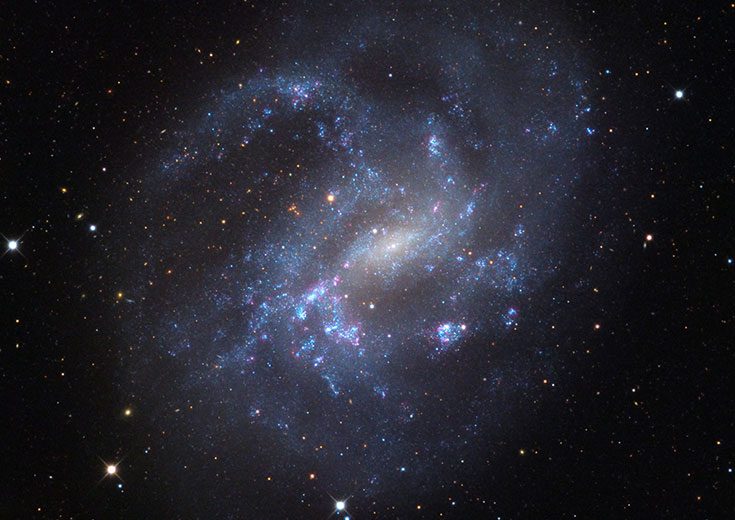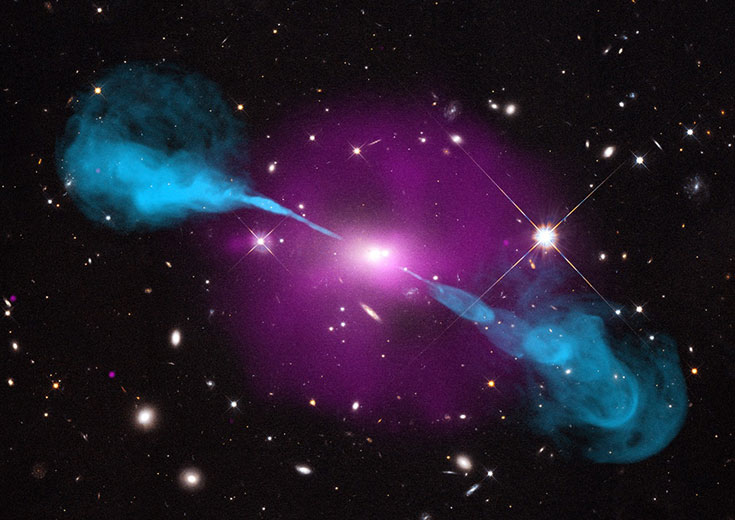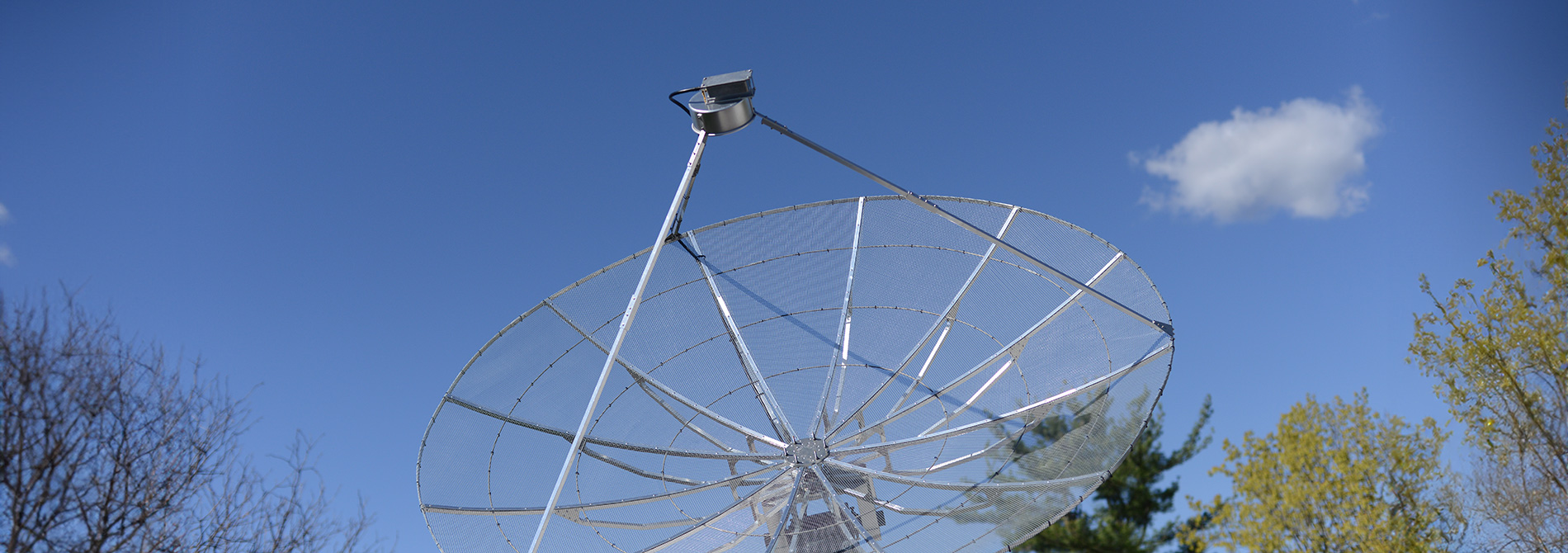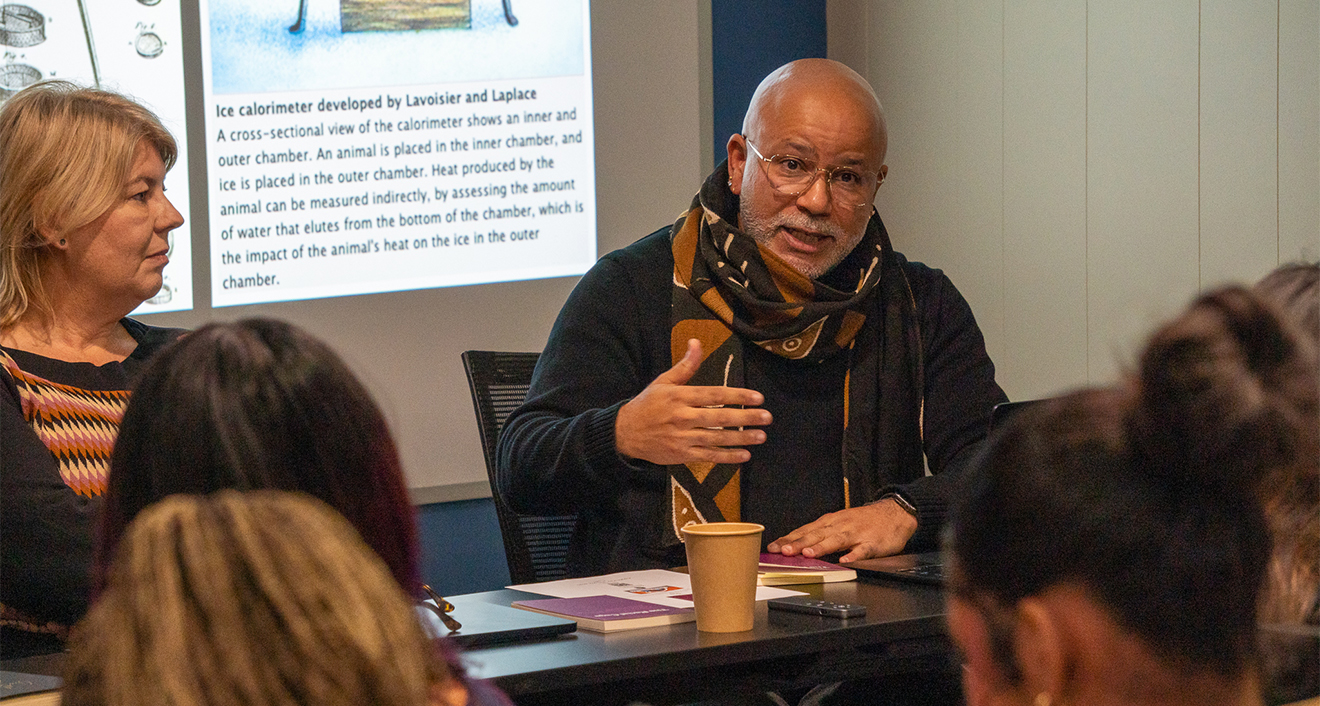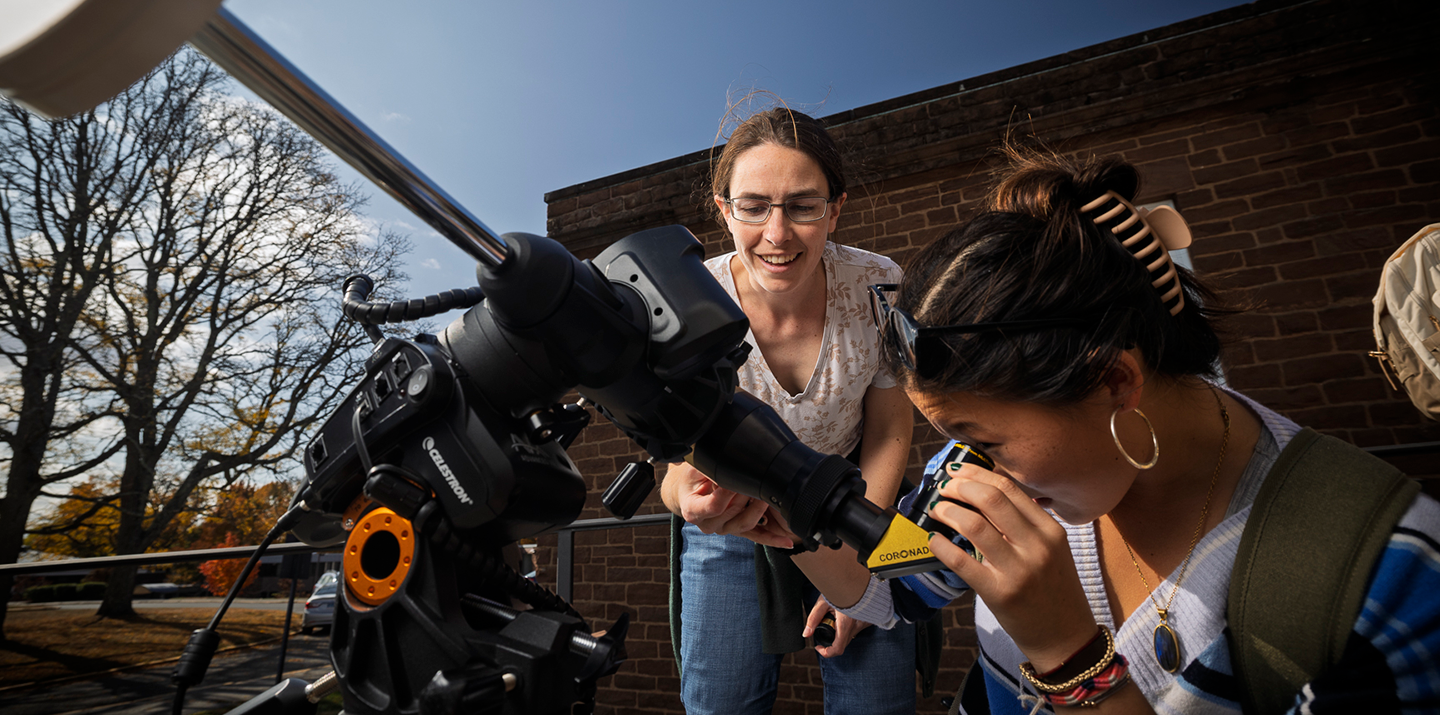

Research
Undergraduate students work closely with faculty and graduate students on research projects, developing skills in data collection, analysis, and interpretation. This mentorship provides practical experience that prepares students for graduate studies or careers in astronomy and related fields.
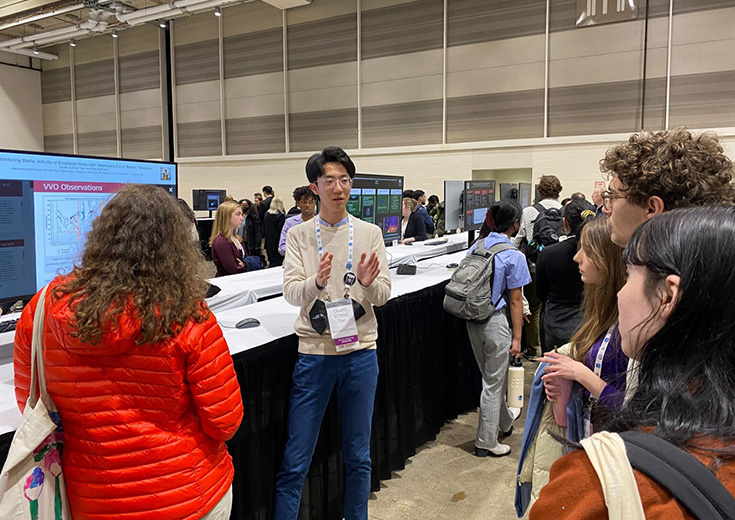
Undergraduate Research
Undergraduates engage in research from their first year, whether traveling to observatories in Arizona or Hawaii, analyzing data from the Hubble Space Telescope, or using our 0.6 m telescope to study young star-forming regions and transiting exoplanets. With state-of-the-art equipment and interdisciplinary collaboration, our active research groups offer students hands-on opportunities at every stage.
Student Work
Many students co-author research papers, present at conferences, and complete senior theses based on their research. Through practical application of their skills, students apply what they learn to explore research areas that align with their interests and post-graduation goals.
The culmination of research at Wesleyan for most undergraduate majors is the senior thesis.
Class of 2025
- Louis Cedarbaum - Training a Convolutional Neural Network to Recognize Star Formation Activity from Simulated Galaxy Images
- Sofia Rinaldi - Playing with FIRE: An Investigation of the Kinematic and Morphological Evolution of Early Massive Galaxies using Simulations
Class of 2024
- Jamar Kittling - ARKS: Preliminary Parametric Models of Radial Debris Disk Structure
- Kyle McGregor - A New Metric Revealing an Overabundance of Multiple Planet Systems Near Mean-Motion Resonance
- Qiushi (Chris) Tian - Monitoring Stellar Activity of Exoplanet Hosts with the Van Vleck Observatory 24-inch Telescope
Class of 2023
- Anna Fehr - Parametric Modeling of Debris Disk Density Structure for ARKS
- Seth Larner - Finding and Characterizing True Seyfert Two AGN in Archival Chandra and SDSS Data
- Eric Rumsfeld - Measuring Dynamical Masses of Gas-Bearing Debris Disk Host Stars
- Joshua Grajales - Dynamical Mass Measurements: Molecular Gas Emission in HD121617’s Debris Disk
Class of 2022
- Cassidy Soloff - Unseen Worlds: A Search for Exoplanet Transits of Bright Early-Type Stars
Class of 2021
- Benjamin Martinez - Black Hole Activity in the Local Universe
- Kimberly Paragas - The Atmospheric Escape of Close-In Gas Giant Exoplanets
- Mason Tea - Searching or Black Holes XRBs in the Local Universe
- David Vizgan - A Dual-Wavelength Study of the AU Mic Debris Disk
- Molly Watstein - A 'Nu' Approach to AGN Luminosity
Class of 2020
- Gil Garcia - Dramatic, Long-Term Variability in AGN
- Hunter Vannier - Mapping The Local Interstellar Medium
Class of 2019
- Robert Baldocchi - Bobby's Big Box of Galaxies
- Michael Henderson - Precision Photometry of Faint White Dwarf Stars from K2 Data
Class of 2018
- Cail Daley - Vertical Structure & Dynamical Mass of AU Mic's Debris Disk
- Hannah Fritze - Hunting Intermediate Mass Black Holes in the Nearby Universe
- Aylin Garcia Soto - Dramatic X-ray and Optical Variability in AGNs
Class of 2017
- Julian Dann - Our Stellar Neighborhood: ANalysis of the LISM Using Hubble
- Girish Duvvuri - Necroplanetology: Disrupted Material Transiting WD1145+017
- Simon Wright - Exploring the High Energy Sky
- Julia Zachary - Measuring the Local ISM with HST/STIS and Voyager
Class of 2016
- Jesse Tarnas - Kepler Transit, Secondary Eclipse, and Phase Curve Analysis
Class of 2015
- Trevor Dorn-Wallenstein - Characterizing the X-ray Source Population of M51
- Jesse Lieman-Sifry - The Mysterious Case of 49 Ceti's Gas-Rich Debris Disk
- Dilovan Serindag - Analyzing Kepler Exoplanets from their Optical Phase Curves
Class of 2012
- Alexandra Truebenbach - The Central Stellar Structures of Active Galaxies
Class of 2011
- Marshall Johnson - Exoplanetary Transit Timing Using the Perkin Telescope
- Adam Michael - Environments of Low-Luminosity Active Galaxies
Class of 2010
- Emily Leiner - Analyzing the Light Curves of Transiting Extrasolar Planets
- Karlen Shahinyan - AGN on the Fringe
Class of 2009
- Anna Williams [OIII]-Detected ELGs at Intermediate Redshift
- Hanna Sugarman Finding Intermediate-Mass Black Holes in the Local Universe
Class of 2008
- Evan Tingle - Observations of the Solar Limb with TRACE and SUMER
- Arthur Sugden - The Star-Formation-Rate Density of the Local Universe
- Jessica Kellar - H-alpha Dots: The Nature of Isolated Emission-line Regions
Students often present their research results at American Astronomical Society meetings and/or in professional journals, such as The Astronomical Journal or The Astrophysical Journal. Student authors recently published these papers in collaboration with their research advisors. Student names are in bold.
- Optical and Radio Observations of the T Tauri Binary KH 15D (V582 Mon): Stellar Properties, Disk Mass Limit, and Discovery of a CO Outflow, Aronow, R.A., Herbst., W., Hughes, A.M., Wilner, D.J., & Winn, J.N., 2018, Astronomical Journal, 155, 47
- Radial Surface Density Profiles of as and Dust in the Debris Disk around 49 Ceti, Hughes, A.M., Lieman-Sifry, J., Flaherty, K.M., Daley, C.M., Roberge, A., Kospal, A., Moor, A., Kamp, I., Wilner, J., Andrews, S.M., Kastner, J.H., & Abraham, P., 2017, Astrophysical Journal, 839, 86
- Debris Disks in the Scorpius-Centaurus OB Association Resolved by ALMA, Lieman-Sifry, J., Hughes, A.M., Carpenter, J.M., Gorti, U., Hales, A., & Flaherty, K.M., 2016, Astrophysical Journal, 828, 26
- Resolved CO Gas Interior to the Dust Rings of the HD 141569 Disk, Flaherty, K.M., Hughes, A.M., Andrews, S.M., Qi, C., Wilner, D.J., Boley, A.C., White, J.A., Harney, W., & Zachary, J., 2016, Astrophysical Journal, 818, 97
- Spectroscopic Evolution of Disintegrating Planetesimals: Minutes to Months Variability in the Circumstellar Gas Associated with WD 1145+017, Redfield, S., Farihi, J., Cauley, P.W., Parsons, S.G., Gaensicke, B.T., & Duvvuri, G., 2017, Astrophysical Journal, 839, 42
- The Interstellar Medium in the Kepler Search Volume, Johnson, M.C., Redfield, S., & Jensen, A.g., 2015 Astrophysical Journal, 807, 162
- Black Holes at the Centers of Nearby Dwarf Galaxies, Moran, E.C., Shahinyan, K., Sugarman, H.R., Velez, D.O., & Eracleous, M., 2014 Astronomical Journal, 148, 13
- The Stellar Environments of Supermassive Black Holes in Nearby Seyfert 2 Galaxies, Truebenbach, A., & Moran, E., Poster at the American Astronomical Society Meeting 220, 335.02
- First Results from the Wesleyan Transiting Exoplanet Program, Johnson, M., Leiner, E., Redfield, S., Poster at the American Astronomical Society Meeting 217, 343.05
- A Population of Metal-Poor Star-Forming Galaxies at Intermediate Redshifts, Salzer, J.J., Williams, A, Gronwall, C., Poster at the American Astronomical Society Meeting 212, 19.10
Summer Research Opportunities
Spend your summer completing a NASA internship, conducting research in Northern Europe, earning a stipend as a student researcher at the Van Vleck Observatory, or participating in one of several research opportunities through our work with the Keck Northeast Astronomy Consortium. Your academic advisor will help you plan your project, explore funding options like fellowships and grants, and apply to a program that brings your aspirations to life.

Planet Formation
Planets form in disks of gas and dust around young stars. By studying these circumstellar disks, we can learn about the initial conditions for planet formation and trace the evolution of young planetary systems as they evolve and interact with their natal material. Associate Professor Meredith Hughes leads research in planet formation at Wesleyan. (Image from NASA, Webb Space Telescope)
X-ray Binary Populations
The properties of X-ray sources in nearby galaxies can tell us about the star formation history of those galaxies. We investigate these sources with a particular emphasis on X-ray binaries that harbor stellar-mass black holes. Associate Professor Roy Kilgard leads research on X-ray binary populations at Wesleyan. (Image from NASA/CXC/Wesleyan Univ./R. Kilgard et al.; Optical: NASA/STScI)
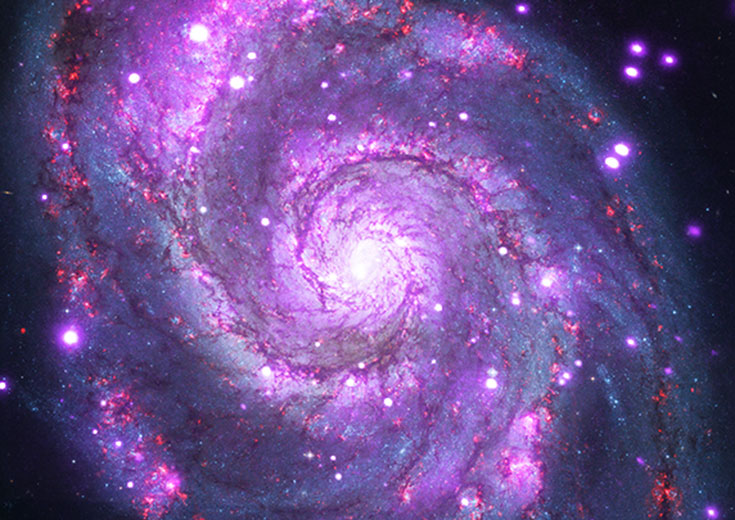
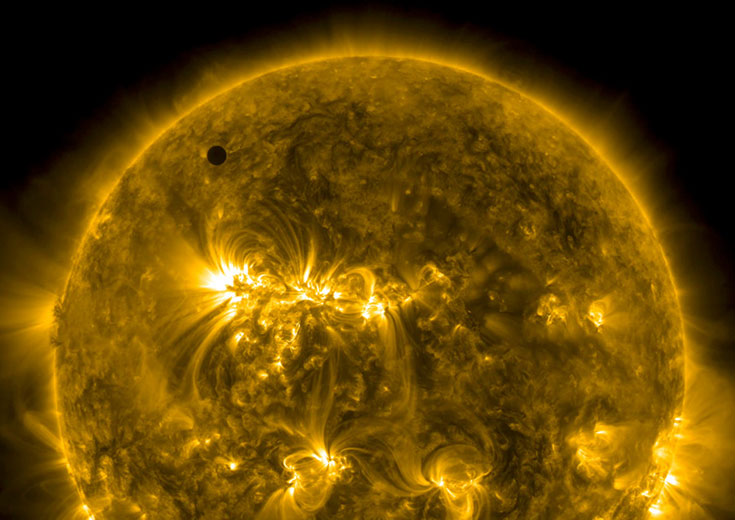
Transiting Exoplanets
The Wesleyan Transiting Exoplanet Project (WesTEP) utilizes on-campus elescopes to observe the light curves of stars as their planets transit, and the largest telescopes in the world to take spectra of the transiting exoplanet's atmosphere. Professor Seth Redfield leads research on transitioning exoplanets at Wesleyan.(Image from the NASA TRACE mission)
Local Interstellar Medium
Spectra of the nearest stars are analyzed in order to reconstruct a three-dimensional morphological and physical model of the gas and dust in our immediate cosmic neighborhood. Professor Seth Redfield leads research on the local interstellar medium at Wesleyan.(Image from NASA, Hubble Heritage Team)
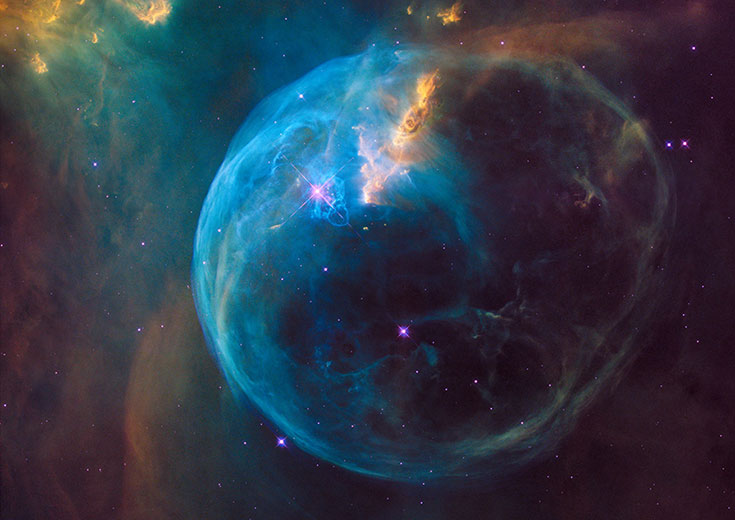
Planetary Science Group
Wesleyan's Department of Astronomy and the Department of Earth and Environmental Sciences collaborate in a study of the origin of planetary systems, planetary geology and geochemistry, the application of remote sensing to terrestrial environmental problems, and more.
Galaxy Formation Theory
Galaxies form through the interaction of gas, dark matter, stars, and black holes. Numerical simulation of these processes can help us understand the physics involved. Professor Sarah Wellons leads research on galaxy formation theory at Wesleyan.
Intermediate-Mass Black Holes
The discovery and study of black holes in the centers of low-mass dwarf galaxies provide new insight into the common processes by which galaxies and black holes evolve. Professor Ed Moran leads research on intermediate-mass black holes at Wesleyan.
Active Galactic Nuclei
Investigations of nearby active galactic nuclei reveal their structure within a few light years of the massive black holes that power them and how these objects have evolved over cosmic time. Professors Sarah Wellons, Roy Kilgard, and Ed Moran lead research on active galactic nuclei at Wesleyan.

